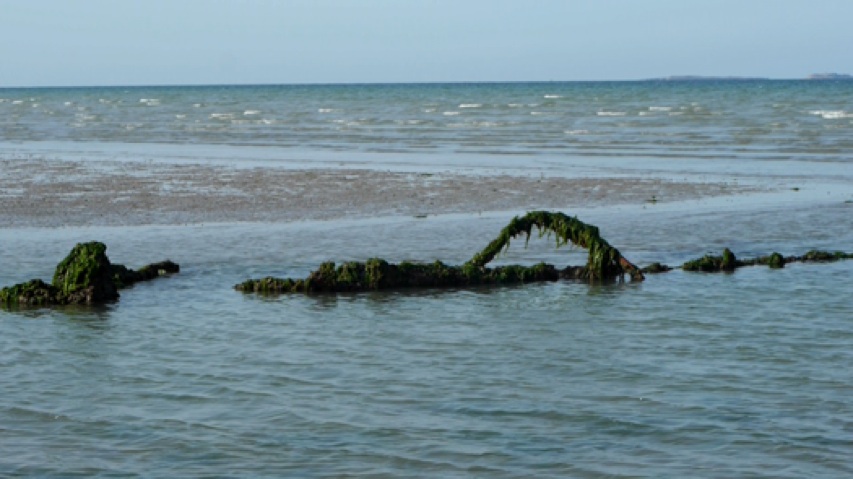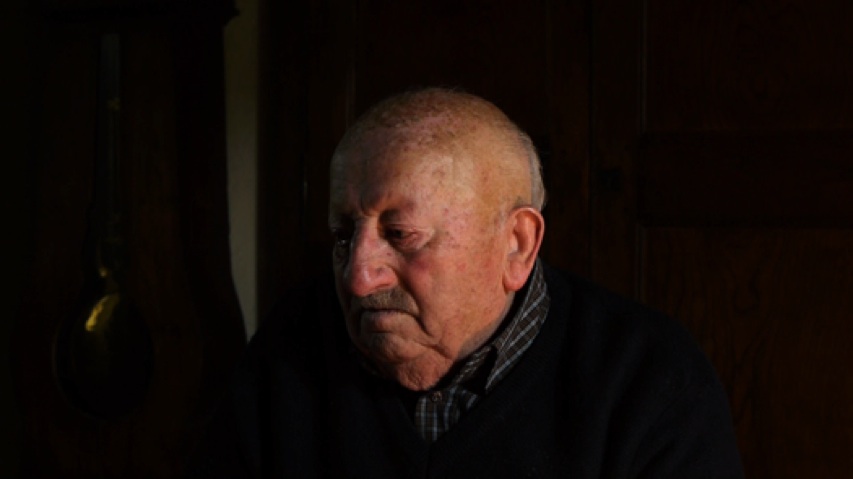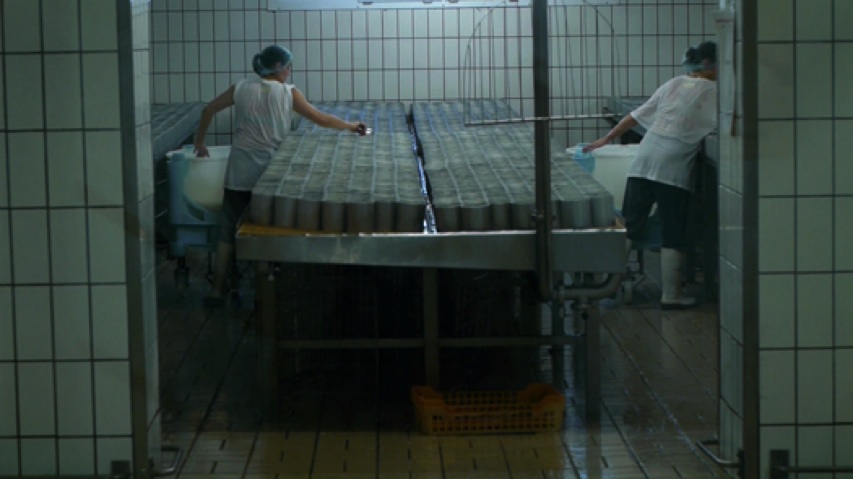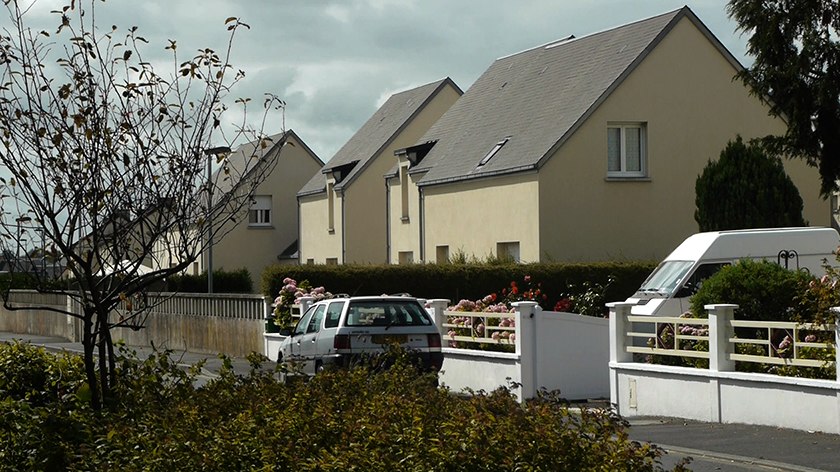claire angelini – retour-film
CE GIGANTESQUE RETOURNEMENT DE LA TERRE
THIS GIGANTIC FURROWING OF THE GROUND
A quelles rencontres humaines, à quel récit des lieux conduit l’exploration d’une région qui fut martyrisée il y a 70 ans –la Manche et le Calvados au moment du débarquement allié de juin 1944?
Que peut le cinéma en matière de mémoire, et que nous raconte ce dialogue établi entre deux films documentaires réalisés à 70 ans de distance?
This film, as topografical movie about the Normandie, is about memory and architecture, about the tension between past and present, and at the end, an "hommage" to a forgotten film of the film history.
France l 2015 I HD I Couleur I 71 minutes
Réalisation et image: Claire Angelini
Son: Claire Angelini
Montage: Claire Angelini
Mixage: Alexandre Rameaux, David Bouvard, Filmflamm
et Domino sound studio/Cyrille Carillon, Marseille
Etalonnage HD: Verinet/Jörg von Baczko, Munich
Témoignage: Bernard Pommier
Narrateurs: Carlo Angelini and Julien Thorel
Langue originale: français
Sous-titres: anglais
Production: Albanera production
PROGRAMMATION
Version courte: Cinémathèque de Montréal, 2014
Avant-première: Cinémoviking, Saint-Lô, France, 2015
Internationale Premiere Berlinale Forum 2015
Metropolis-Kommunales Kino, Hamburg, 2015
Semaine Asymétrique 2015, Marseille
Expérimentation documentaire, Université Lyon 2 /
Festival A nous de voir, Oullins, 2015
Metropolis-Kommunales Kino, Hamburg, 2015
Underdox 10, 2015
Mardis de l’Histoire, INHA, 2015
ENSA Caen, 2015
Rétrospective, Werkstattkino, Munich, 2016
Cinéthèque de François Bonenfant, Le Fresnoy, Studio national des arts contemporains, 2017
Musée-mémorial de Rivesaltes, 2018
Filmoteca de Barcelona, 2019
IMEC/ Institut Mémoire de l’Edition Contemporaine, 2024
Ce gigantesque retournement de la terre est conçu en trois parties de « styles » cinématographiques volontairement différents et selon des modes d’énonciation différents. Toutes trois forment les facettes d’une réflexion « en acte » – c’est-à-dire en images et en sons – suscitée par un film oublié de Jean Grémillon, qui porte sur les conséquences, pour la Normandie et sa population, du
« Débarquement » anglo-américain.
Ce gigantesque retournement de la terre joue à son tour sur des couches de temps et d’histoire en revenant sur les pas de Grémillon, refaisant un parcours géographique à travers les villes et villages qu’il avait filmées en septembre 1944 puis en juillet-août 1945.
La première partie donne la parole à un paysan de Basse-Normandie. On le filme aujourd’hui se remémorant des événements passés mais ce faisant on filme aussi les 70 ans qui se sont inscrits dans le corps de cet homme de 84 ans qui parcourt mentalement ses trois semaines d’errance dans la campagne, sous les obus, parmi les morts et les ruines, et le temps d'après auquel sa famille et lui-même durent faire face, marqué par la destruction, les blessures et la mort. « Dans ce coin-là de notre Normandie, conclut-il, tout a été détruit… »
La deuxième partie est un parcours topographique qui se remet dans les pas du film de Grémillon en filmant ici et maintenant les lieux qu’il évoquait hier. A l'instar du récit de Rabelais imaginant, dans le Quart Livre, que des sons et des paroles gelées lors de violents combats hivernaux reprennent vie une année plus tard à la stupéfaction des voyageurs, en fondant à la chaleur, est enregistré ici l’écart historique qui s’est creusé entre deux temps différents qui enveloppent pourtant un même territoire. Mais justement, ce terrain qui fut celui d'opérations militaires particulièrement meurtrières, est-il encore le même 70 ans plus tard ?
La troisième partie s’attache précisément à la reconstruction de l’après-guerre et aux principes directeurs qui l’inspirèrent et l’ordonnèrent. Les urbanistes et les architectes mandatés par le ministère de la Reconstruction de Raoul Dautry (auparavant président de l’Entr’aide française venue au secours des populations sinistrées) établirent pour l'ensemble du pays des principes, et conduisirent des projets qui voulurent donner à la Normandie un nouveau visage. Qu’en est-il aujourd'hui ? Car un tel « gigantesque retournement de la terre » ne pouvait se combler comme par la magie qu’imagina alors le poète Jules Supervielle.
Que nous disent dès lors les images (filmiques) de ces images de bâtiments, de maisons, de villes qui furent alors projetées ? Et quelle logique s’est-elle inéluctablement enclenchée dans cette ère nouvelle en matière d’organisation du territoire, d’urbanisation des campagnes, de mécanisation de l’agriculture toujours en cours et en crise ?
Les trois temps verbaux des trois dispositifs d’énonciation du film (récit d’un passé filmé au présent, récit passé au présent, discours au conditionnel) supportent ainsi trois modalités de discours historiques (témoignage vécu ; description factuelle des événements ; planification de l’avenir) qu’éprouve le cinéma en filmant un espace-temps contemporain.











FILM






ENGLISH
Claire ANGELINI – Ce gigantesque retournement de la terre
In 1944-45, French director Jean Grémillon went back to his native Normandy to record the destruction of the region caused by the then still raging war. What he saw was terrifying: destroyed towns and “damned landscapes”, one of the greenest regions suddenly swallowed by death. But he also saw the vital force of the people at work, for survival and reconstruction. The resulting documentary, Le 6 juin à l’aube, reappeared only recently in the French cultural landscape, after a poor reception at the time and almost seven decades of invisibility. The testimony of the “collateral damage” undergone by those rural areas was inaudible to the winners’ history of war and of the arrival of modernity.
For several films now, Claire Angelini has been interested by these impossible historical situations in which people get trapped in silence, their stories untellable because whether on the “right” or “wrong” side of the official history, they were in the wrong place at the wrong time. “Collateral damage”: a really terrible notion. So Claire Angelini literally followed Grémillon’s path, making a film out of the previous film. She went back to Normandy, and filmed again every village that appeared in Le 6 juin à l’aube. She filmed houses and tractors, roads and fields, peasants at work and the empty spaces of modern urbanity, what is and what is left. The spectator is guided three times through this historical and geographical journey, three movements across image, sound and imagination.
In the first movement, we follow another guide, an 84-year old man telling his story of surviving through these dreadful times of summer 1944 and the winter that followed. He was 14, and he tells his story for the first time. His memory reconstructs the succession of names, places and events step by step, throughout his speech—small events that marked him forever: the lice where they slept that night, the raw cabbage they had to eat, the wounded cow, the sadness of their mother when she came back from the hospital… In the darkness of his kitchen, with the small noises around him of life going on, we plunge with him in a past defined by the litany of his “there was nothing”—“we had nothing left”, “there was nothing around”, “nothing at all”, “no nothing”… Nothing but dead, lots and lots—French, German or American, that doesn’t make much difference.
After this initial, mental return to the scene of the crimes, the second movement comes back to Grémillon’s film. Claire Angelini’s work then cannot but evoke a whole history of film, including Le 6 juin à l’aube in a tradition that would mobilize also Danièle Huillet and Jean-Marie Straub’s Too Early/Too Late as well as Marguerite Duras’ Son nom de Venise dans Calcutta désert. Grémillon’s soundtrack accompanies images of Normandy today, each village mentioned appearing in the prosaic reality of its contemporary state. The film then questions precisely what cinema can do to record what is as what is left, to see through the green pastures and ordinary houses the traces of the past disasters. What if they became invisible? What would that tell us of our history—or of the limits and possibilities of film as a witness in the movement of history? But the tragic music of Grémillon’s film accompanying a young couple of joggers through the streets of a small Norman town still reminds us both of the past dramas that occurred here when they were not yet born, and of the vital force that runs through these bodies and ours. From the wounds described by the old man with his soft voice to these joggers and to the slight trembling of the handheld camera, history appears here as a deeply incarnated process, inscribing itself in the bodies of the people, as well as of the trees and buildings. The “furrowing of the ground” is already a bodily description of the rape that this countryside has undergone.
The third movement leaves Grémillon behind, to question the processes that governed post-war reconstruction—or that would govern it, to adopt the strange conditional mode adopted by the narrator, a mode intermixing the fiction of what was with the sense of totalitarian ineluctability. What is left to the eyes today, after that destruction to nothing, is what has been reconstructed. Claire Angelini shows us another Normandy, devoid of true life and imprisoned in the standardization of architecture, in concrete and plastic, in soulless urban sceneries. The 1950s reconstruction has been indifferent to rural culture, and urbanism has largely remained so until today. The destruction of Normandy has made it a perfect field for the early experiments of this modernity. Having as it were no history left, it could start again from scratch in the new world. It takes the three movements of Claire Angelini’s film to show us that Normandy does have a history, forgotten though it may be, or hidden underneath the green and the concrete. Its traces are still perceptible in the bodies of old men and old trees. Seeing them requires attentive eyes sustained by both patience and the sense of emergency. What makes Claire Angelini’s film particularly moving, is that these qualities have emerged here from her constant and modest dialogue, through her art, with an old colleague, Jean Grémillon, dead in 1959. Walter Benjamin once wrote that the problem with today’s bourgeoisie was that they lived in houses where nobody had died before. Claire Angelini lives in a cinema full of dead people, and her art is thick with that incredible richness.
Benoît Turquety, 2015

